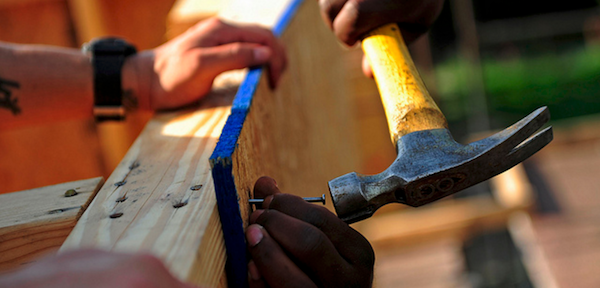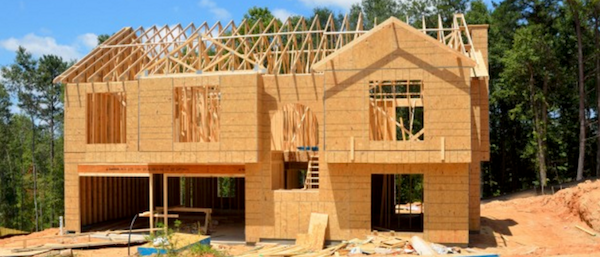Just over a year ago, at a conference in January 2015, I sat with a local builder and listened over lunch as a leading housing economist revised his 2015 forecast down to “only” 36 percent growth in housing because too many Millennials were holding out. I gave my friend a withering look and he nodded. Later, at a break in the programming, we confirmed what we’d both been thinking: Even if Millennials began buying in droves, there would be nowhere near enough trades to handle 36 percent growth in housing, let alone the economist’s initial—substantially higher—number. No doubt the economist had thoroughly analyzed demand factors, but somehow the supply side had escaped him.
My mind wandered back to a builder meeting in the Mid-Atlantic a few years earlier as the downturn was just beginning to wane. During the meeting, I told the company president that one reason to run a Lean process implementation would be to help reduce the impact of the serious trade shortage that would be part of the economic recovery. He looked at me, shook his head, and said—in front of his operating team—that there would be no trade shortage. It would take care of itself, “as it always does.”
This past January, at the NAHB’s annual International Builders’ Show, I ran into one of that same builder’s VPs. He said that the company, although handling it better than some, is now hindered by the most serious shortage of trade labor this country has ever seen, and he reminded me about the series of articles I wrote before the previous presidential election about the “elephant in the room”: immigration. In those articles, I talked about the inevitable shortage of trades and how it would affect our industry, imploring everyone in home building to get busy and work on the problem at whatever level they could.
As we talked, another builder I’ve known for years happened by and launched into a rant about how in Texas the trade shortage was killing him and every other builder he knew. We held our own little pity party there in the hallway. As far as these builders were concerned, no one was doing anything substantial about the labor problem. When I asked specifically what their own companies had done to help solve the issue, they stammered, at a loss for an answer.
If you recall the pre-Obama days, George W. Bush was practically crucified by members of his own party for trying to float an immigration reform proposal that amounted to something beyond just building huge walls and throwing all the illegals back. The issue pretty much died for five years, then in mid-2013 the fully bipartisan “Gang of Eight,” with some of the biggest names in Congress, developed a meaningful, comprehensive immigration package.
We live in a time, however, when anything bipartisan—regardless of whether it has any promise—immediately fires off the sirens of talk radio and cable news, while the cash registers of super-PACs ring out across the land. According to its breathless and frothing opponents, that immigration reform proposal threatened the very foundations of the Republic, although no one has ever determined why.
You’ll Never Leave Iowa Alive
How bad was it? One of the best and brightest of the Gang of Eight, a young senator and now presidential candidate, has had to spend time during each presidential debate protesting, in so many words: It wasn’t me! I didn’t do it!
The Gang of Eight’s immigration bill wasn’t perfect, and there’s no way to craft something that placates every interest group. But the fact that the Left, the Right, and others undefinable all had problems with the legislation told me it was probably about right and likely the best we could do. Yet the vitriol was so over-the-top that our promising young candidate now feels compelled to rewrite history. Might he garner more votes if he’d just stand up and tell the truth and challenge others about their lack of leadership in this economic debacle? Instead, all we get is chest-thumping and get-tough proclamations that are as meaningless as they are undoable. It’s incredibly ironic that the father of modern conservatism, Ronald Reagan, couldn’t have survived a current primary run. With Reagan’s offer of conditional amnesty to undocumented aliens, let alone the “earned income tax credit” that would redistribute income to the working poor, he’d never have made it out of Iowa alive.
The Long Walk to Deportation
I received some entertaining hate mail because of those columns I wrote four years ago. The general theme was that it’s people like me who are destroying this country—yes, the same country built by and on the backs of immigrants—because we want to implement a workable solution but are totally delusional about the issue.
I’ve spoken with someone in Washington who’s in a good position to know, and he claims that the real number of “illegals” is more than double the 11 to 12 million figure that’s usually quoted. But, for argument’s sake, let’s just say that number is 12 million. A little back-of-the-napkin math quickly shows that mass deportation is simply not physically or economically possible.
First, each suspected illegal alien requires due process. This is America, after all, and the presumption of innocence until proven guilty cannot be suspended because you suspect someone of breaking the law. You have to treat someone as a citizen until you prove that they are not one.
So you hire tens of thousands of people and train them so you can process 10,000 undocumented aliens a week. If you could get each alien identified, arrested, jailed, processed, transported, and deported in 30 days, that would be miraculous. That’s 2,000 individuals per working day, so you have to build facilities to house the at least 50,000 detainees who are in process. At least half of those are women and children, so your facilities have to take that into consideration as well.
A quick Internet search shows that prisons cost $100K per bed to build and $35K annually to house each inmate—your tax dollars at work. To process and deport 500,000 illegals annually would take 24 years to get the job done at a cost of more than a hundred billion dollars. And that’s assuming there are no more who cross the border and that none of them have children.
Does anyone who can do 8th grade math actually believe that would work? In addition, you would absolutely cripple the housing industry, along with hospitality, health care, agriculture, and food services, to name just a few industries that employ these workers—and pay them very little, by the way.

So here we are, eight years past the original George W. Bush immigration reform proposal and nearly three years after the Gang of Eight’s, and things have only gotten worse. I totally agree that we have to control the border, but the solution will have to include a guest-worker program and a path to citizenship, among other initiatives. But check out the candidates’ rhetoric. None of them are talking realistically or intelligently about the issue.
Face the Brutal Facts
The trade shortage is critical and will get worse before it gets better. Ninety-five percent of American builders had an increase of gross revenue in 2015 but were unable to increase retail sales prices as fast as their cost increases, so virtually all of those saw a decrease in profit margin as a percentage.
Not long after my lunch listening to the economist, I published an article in Professional Builder’s March 2015 issue titled, “10 Questions to Ruin Your Year,” and outlined exactly what would happen. It didn’t take any level of genius to predict that margins would drop in 2015, although I seemed to be the only one writing about it. It did require inside knowledge of what was going on with builders every day, and my colleagues and I at TrueNorth had that, in spades. So face the brutal facts: 2016 will see the same phenomenon as will 2017 and likely beyond. Both Meyers Research and John Burns Real Estate Consulting have published research this year documenting how retail sales prices compared with the price of existing homes are not just a little out of line, but dramatically so. This means retail prices won’t keep pace with the increases of the eight cost factors covered in that article—and the single largest factor is labor.
95% of American builders had an increase of gross revenue in 2015 but were unable to increase retail sales prices as fast as their cost increases.
Incredibly, during the past few years, I had several “Solving the Trade Shortage” speaking proposals at various conferences rejected—a first for me—because the topic was “not current enough.” The perfect storm was brewing, there were specific things that could be done about it, and no one was acting. In one of those previous articles, I used examples such as steel for automobiles, oil for the plastics industry, and even nurses for health care. How would these industries respond, I challenged, if they had clear evidence that three or four years down the road their growth and profits would be compromised—despite increasing structural demand—due to shortages in one of the most critical elements of their business? And if they didn’t respond, we would question their very intelligence and ability to run their businesses. Only recently have we begun to wake up, with articles on the impact of the trade shortage appearing in Fortune, Forbes, The Wall Street Journal, and others.
We Have Failed
This year at the NAHB International Builders’ Show I talked with at least 35 or 40 builders in some depth, and for at least 90 percent of them, the worsening trade shortage was foremost on their minds. Everyone is talking about it now because it’s hurting their profit. I hope that by way of writing a column in the industry for nearly two decades I have earned the right to be honest, so let’s go there. Any rational assessment of the U.S. home building industry would say simply that we have failed. Our refusal to face and address the trade labor shortage in a proactive manner with sufficient scale is a gross oversight at best and at worst, total incompetence. We have gotten exactly what we earned.
If anyone wants to correct me on that and show me evidence of broad industry initiatives attacking this problem, then have at it. I would love to be wrong. There are, indeed, small and local examples of schools, HBAs, and a few builders who have taken this on, yet we are so far from the critical mass needed that it’s almost as if nothing has happened. It does not appear to be a front-page issue for the NAHB. Go to nahb.org, search any variation of “trade shortage,” and you get just a few hits that address the issue, including a 2014 webinar by me, and an economist’s report from 18 months ago.
There are indeed NAHB initiatives underway that are increasing in scale, and I will detail those in a subsequent column. A few BIAs and HBAs have launched campaigns to develop trades using the NAHB trade development toolkit, but only a fraction of what’s needed. Why aren’t all of the 700 doing the same?

Where is the plan from the Leading Builders of America, the group made up of 20 or so of the country’s largest builders? I recently heard of one—but just one—of these builders taking some substantive steps, and I will feature them in a subsequent column along with other builders doing things that are working. But where is the leadership? What if all of these large builders required each of their local operations to work with the BIA/HBA, their local suppliers and trades, and vocational/technical training schools to develop the trade base, with mandated annual goals? And how about the suppliers and manufacturers? Is the leadership there? Yes, there are a few notable efforts on the supplier side, and I’ll communicate those later as well, but as a whole, not much is happening.
Politics as Usual
There are many things going on politically that all of these entities should be jumping up and down screaming about. For example, each time a politician talks about the importance of education and the funding required, then mentions only college-level content, forgoing trade and technical training, all of us should protest loudly and set them straight. Better yet, let’s work proactively so politicians can’t overlook it. Michigan Governor Rick Snyder, who has two Ph.D.s, began emphasizing trade and technical education several years ago and it was so notable it stood out. But for most, it’s a case of out of sight, out of mind, and this issue has been nearly invisible. But let the threat of an adverse ruling on land use, environmental law, or labor law rear its head and you will be deluged by “write your local government representative” emails, petitions, and requests for PAC money. So stop and think: When was the last time you saw the system kick into gear on the issue of the labor shortage?
In the next few columns, I’ll tackle these issues and feature the best examples from those who are truly working to remedy the trade labor situation. Toward that end, if you, your organization, or someone you know has something that’s working, please contact me (soon) at scott@truen.com. We need to tell your story and inspire others. We will also examine the strategy of reducing the need for labor through the application of manufacturing techniques to home building. With no small amount of irony, I relate the words of Bill Pulte from a workshop I attended fully 27 years ago: “This is a revolution that is about this far [holding up his finger and thumb with a tiny space between] from happening … since the end of World War II!” There are great systems out there, but the truth is that if you look at the percentage of U.S. housing today that’s built using manufactured techniques and components, we haven’t progressed much since Pulte made his comment.
Meanwhile, we will also feature a few builders that have no trade shortages at all despite building in markets where the overall labor scarcity is severe. For these rare builders, the shortage has actually become a competitive advantage, as they know most builders don’t have the will to do what it takes to overcome the obstacles. That won’t solve the industry shortage, but it just may help solve yours.
There’s a lot to discuss on this critical issue and a lot to learn. We need your input and really, I even welcome the hate mail. An editor told me years ago that you haven’t made it as a columnist if you don’t generate hate mail now and then—and I am overdue.
For a PDF of all the articles in the series “Solving the Trade Shortage,” send email to info@truen.com and include “Trade Shortage” in the subject line.
Advertisement
Related Stories
Labor + Trade Relations
Who's Earning What in Construction
Workers in construction management roles may earn a higher median wage, but on average, lower-paid occupations have experienced somewhat faster wage growth
Construction
Proven Ways to Improve Jobsite Productivity
Consider these solutions for reducing cycle time, hard costs, dry runs, rework, miscommunication, and overall inefficiencies on the jobsite
Labor + Trade Relations
Residential Building Workers See Jump in Wage Growth
Housing industry worker wages have been trending upward over the past eight months, but February saw wages grow the fastest they have in more than two years








